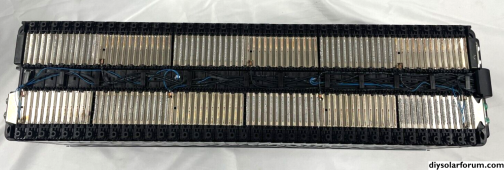This is all about the info I have put together over the past few days because I bought a A123 based battery from Battery Evo and set out to find all I could about it in order to get the most out of it.
You can get ready to use batteries with the old A123 modules from Battery Evo, Big Battery, and Tech Direct, there are probably others ? For DIY projects you will find old A123 modules at Battery Hookup and Green Tec Auto
Like all companies there are good and bad reviews, I hope we can keep this thread about the batteries and not the companies though I will say my experience with Evo was very good and I did in fact buy a 2nd battery just yesterday. (will share more in a different thread)
You'll see I have attached several pdf's they include the spec sheets, the care & maintenance guide, and design guides for these OLD A123 systems.
The old was an american company that went bankrupt. The new is a chinese company that bought the old.
You can see the NEW stuff here https://www.geebattery.com/battery/a123-batteries-for-sale and yes they have batteries too, 48v 400ah that weighs 680 lbs was one I saw.
The major difference between the old and the new that matters is the voltages,
The old a 0% SOC = 3 and a 100% SOC = 3.6
The new a 0% SOC = 3.2 and a 100% SOC = 3.65
So, if you have these batteries, your max bulk charge setting should not exceed 57.6v for a 48v battery and float should be 56
And the really cool thing I learned is that they self balance. Simply run the battery down to 0% SOC and then charge it back to 100%. It does this because there is a balance board built into the NEC module.
Will was aware that this was a better battery chemistry but said a few years ago that he did not want to become a battery salesman. But here is one of his vids with an A123 module
Here is a tear down of a big battery that uses A123 NEC modules, my Evo has 2 of these in a bigger box wired in parallel.
You can get ready to use batteries with the old A123 modules from Battery Evo, Big Battery, and Tech Direct, there are probably others ? For DIY projects you will find old A123 modules at Battery Hookup and Green Tec Auto
Like all companies there are good and bad reviews, I hope we can keep this thread about the batteries and not the companies though I will say my experience with Evo was very good and I did in fact buy a 2nd battery just yesterday. (will share more in a different thread)
You'll see I have attached several pdf's they include the spec sheets, the care & maintenance guide, and design guides for these OLD A123 systems.
The old was an american company that went bankrupt. The new is a chinese company that bought the old.
You can see the NEW stuff here https://www.geebattery.com/battery/a123-batteries-for-sale and yes they have batteries too, 48v 400ah that weighs 680 lbs was one I saw.
The major difference between the old and the new that matters is the voltages,
The old a 0% SOC = 3 and a 100% SOC = 3.6
The new a 0% SOC = 3.2 and a 100% SOC = 3.65
So, if you have these batteries, your max bulk charge setting should not exceed 57.6v for a 48v battery and float should be 56
And the really cool thing I learned is that they self balance. Simply run the battery down to 0% SOC and then charge it back to 100%. It does this because there is a balance board built into the NEC module.
Will was aware that this was a better battery chemistry but said a few years ago that he did not want to become a battery salesman. But here is one of his vids with an A123 module
Here is a tear down of a big battery that uses A123 NEC modules, my Evo has 2 of these in a bigger box wired in parallel.








